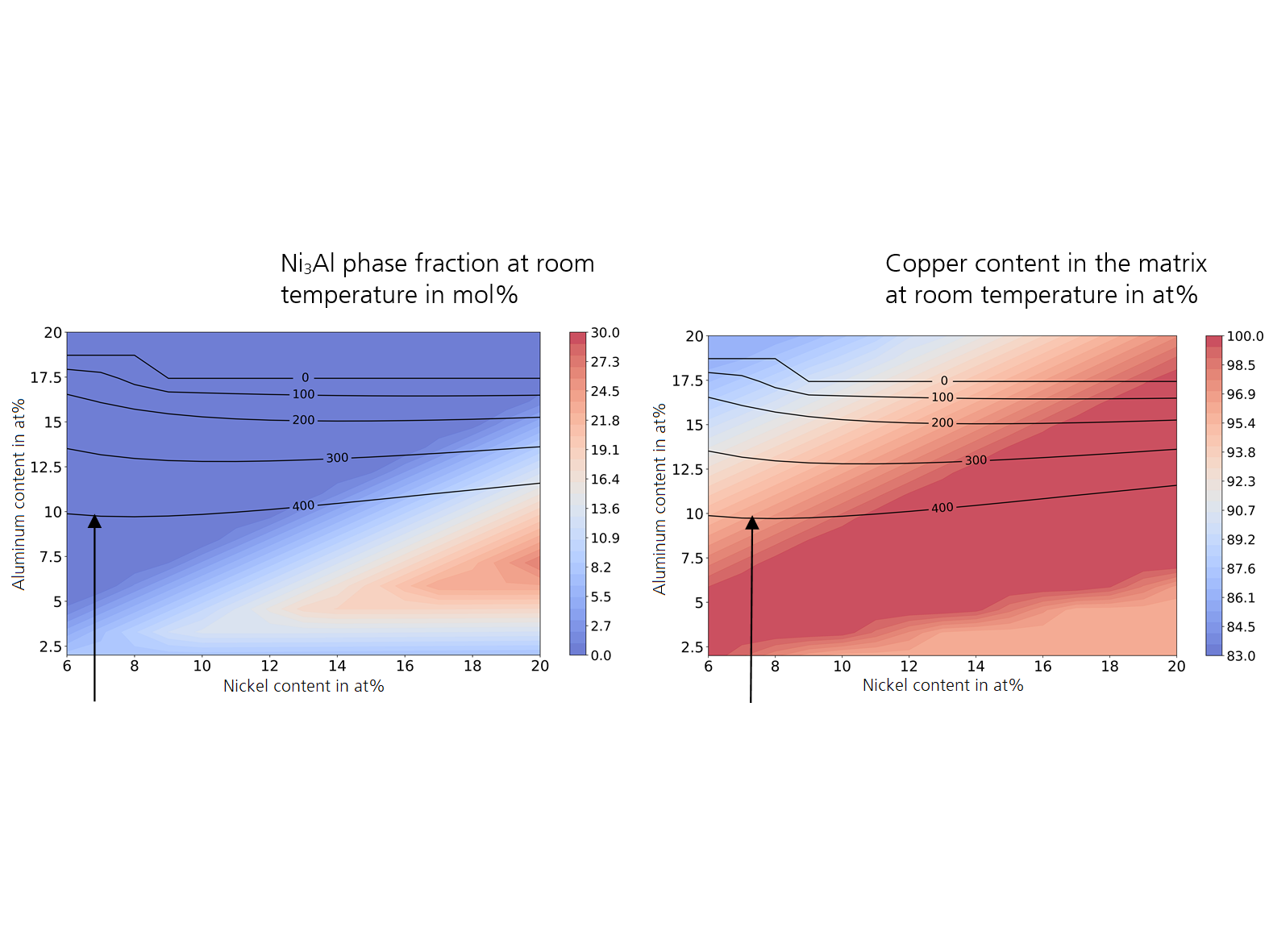Replacing Beryllium in copper alloys (CuBiK)

Developing new, high-strength copper alloys via comprehensive simulations
Copper-beryllium alloys are characterized by a very high strength of the copper alloys at comparatively high electrical conductivity. Beryllium and especially beryllium dusts can be very harmful to human health. As part of the funding of the innovative use of raw materials in SMEs by the state of Baden-Württemberg, CuNiAl alloys were further developed as substitute materials for copper-beryllium alloys in a joint project. The ‘fem Forschungsinstitut Edelmetalle + Metallchemie’ (fem Research Institute for Precious Metals + Metal Chemistry) in Schwäbisch Gmünd, the ‘NMI Naturwissenschaftliches und Medizinisches Institut’ (NMI Natural and Medical Sciences Institute) in Reutlingen and a number of industrial partners were involved as project partners. The alloy system proved to be quite promising in terms of achievable strength and electrical conductivity in an investigation of 35 alloy systems.
By means of extensive automated thermodynamic simulations at the Fraunhofer IWM, CuNiAl alloys for industrial castings could be defined. The prototype alloys were produced by the fem as well as by the industrial partners. Moreover their microstructure, mechanical and electrical properties as well as corrosion tendency were investigated. High-resolution electron microscopic examinations at the fem and at the NMI were used to identify depuration phases and determine their proportion and morphology.
By adjusting alloy contents and adding a fourth alloying element, it was possible to increase hardness and electrical conductivity as anticipated. CuNiAl alloys are characterized by very good resistance to obsolescence. Despite their maximum strength, they also have a high deformation capacity and can be used both as wrought alloys and as cast alloys. Initial investigations suggest that they are coatable and comparatively resistant to corrosion and mechanical wear. Punchability is also a given. In addition, the project has made a significant contribution to understanding the relationships between material properties, processing history and microstructure, thus providing a good starting point for industrial adaptation.
 Fraunhofer Institute for Mechanics of Materials IWM
Fraunhofer Institute for Mechanics of Materials IWM